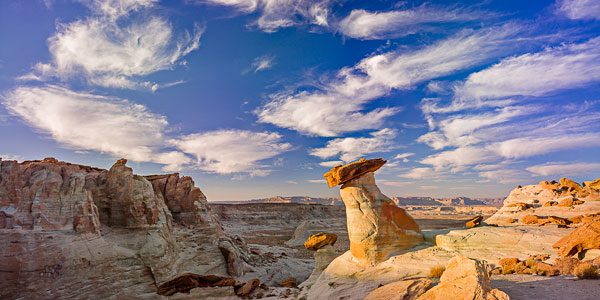Why Bother?
Regular readers know that from time to time I publish product comparison tests. Usually these are of equipment that I own, though occasionally I’ll get a manufacturer’s loan of something new, exciting, or that I’m particularly interested in. In each case though the purpose of the test is to answer the question‚how does the new product compare to what I’m already using?
Looking at items one at a time; comparing specs‚ these are "OK" in and of themselves. But nothing beats actually heading out into the field to do the type of shooting one normally does, and taking along both pieces of gear. This is the true test of any piece of photographic equipment. Then, if I think that others might find it of interest as well, I’ll also write a piece for this site or for a magazine.
The 1.6X Factor
When theCanon D30came out in late 1999 I was knocked out by how good the image quality was. Resolution that stood up extremely well in prints up to 11X14" and freedom from noise that shamed 35mm film.
I began to use it in preference to myCanon EOS 1Vand film. While I enjoyed the 1.6X magnification factor when using long lenses, especially for wildlife work, it was a real nuisance when wide angle was needed. My widest lens was the Canon 17-35mm f/2.8 L, and 17mm became almost 28mm because of the magnification factor. Sometimes not wide enough.
Photographed with a Canon EOS D30 and 14mm f/2.8 Sigma lens at ISO 100.
Eventually I ended up buying theSigma 14mmlens. In 35mm terms I rarely would need a lens that wide, and I couldn’t bring myself to justify the cost for the Canon 14mm, so I bought the Sigma. If you read that review you’ll see that I quite liked it, and found myself using it from time to time. At 22mm effective coverage on the D30 it worked out well and I was reasonably pleased with the results.
For a long time I never even had used theSigma 14mmon a 35mm film body. But when I did I was in for a shock. In my article titledBattle of The UltrawidesI compared it with the12mm Voigtlander Heliarand theHasselblad XPan’s 30mm,and was very disappointed at the edge resolution‚ even at medium apertures. While the center 2/3rds of the Sigma’s coverage was pretty good, the edges were very poor. And, because I’d only been using it on a D30 with its 1.6X magnification factor I hadn’t been seeing the outer 1/3rd of the frame.
The Full-Frame Factor
So long as digital bodies "cropped" the outer 1/3rd of the Sigma 14mm’s coverage circle the fact that the edges were soft didn’t affect me. But in the summer of 2002Contaxstarted shipping the first full-frame (24X36mm) digital SLR, and no doubt it wouldn’t be long until Canon, Nikon and everyone else would follow suit.
A few months of experience with the Canon D60 and I knew that when a full-frame Canon digital body evebtually came along I’d end up doing a lot of my general work in 35mm format again, and that my medium format use would be reduced. Consequently, based on some tests, and in part onFred Miranda’sglowing report on Canon’s new16-35mm f/2.8L, I purchased one to replace my so-so Canon 17-35mm f/2.8 lens. The improvement that the new lens represented was startling. Very worthwhile indeed.
2mm is a Long Way
This has all been a very long-winded way of leading up to a test between theSigma 14mmand the newCanon 16-35mmlenses. I knew that when a full-frame sensor body eventually came along I’d find the Sigma lacking, but how did it compare to the new 16-35mm at its widest setting? And, how big a difference would those 2mm make in real-world coverage?
The following frames were taken in a convenient semi-urban setting. I wasn’t looking to create art, just to do some tests.
 Sigma 14mm f/2.8
Sigma 14mm f/2.8
 Canon 16-35mm f/2.8 L @ 16mm
Canon 16-35mm f/2.8 L @ 16mm
The first frame above is with the Sigma 14mm and the second with the Canon zoom set at 16mm. Both shots were taken at f/8‚ 3 stops down from wide open. Both frames were scanned with anImacon Flextight Photoscanner at 3200 PPI. Nothing was done to either frame in Photoshop other than the usual (and equal) amount of USM.
Looking at angle-of-coverage first, you’ll see that those 2mm do make a difference. Not a huge amount, but it’s there. Even at this small reproduction size though you can see that the Sigma’s corners are not at all sharp.
There have been a couple of observations made online since this was first published that this test might be flawed because the shot was handheld. Nonsense! It was taken at 1/250 second @ f/8 and of course with ultra-wide lenses. A monkey could have taken a sharp picture with these. Also, as always is the case, some wag objected to the use of USM. When will people learn that unsharpnes masking has nothing to do with sharpness, it has to do with accutance. Read the tutorials!
Resolution
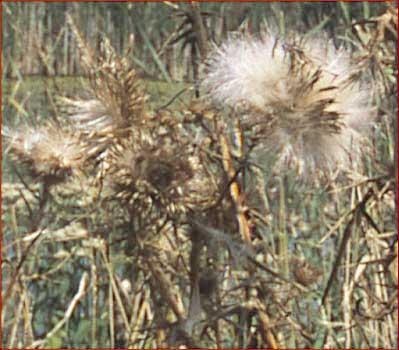

Sigma 14mm Center
Canon 16mm Center
These two crops from the center of the frame clearly show that even at each lens’ optimum aperture, and at the center, there is a large difference. The Canon is considerably sharper.
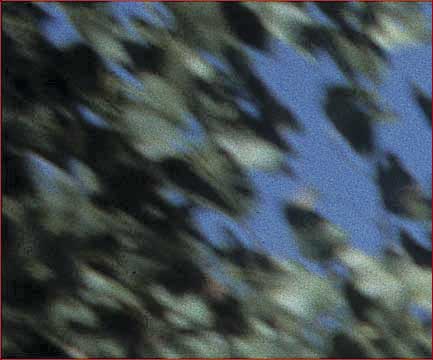
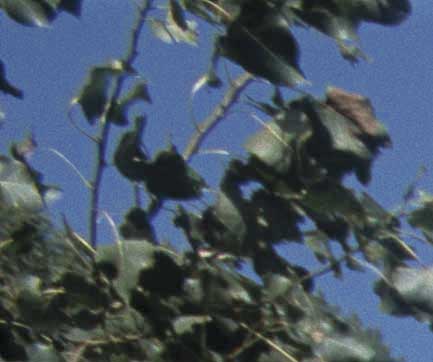
At the edges we see an ever greater loss of sharpness with the Sigma. The Canon is quite acceptable, but frankly the Sigma simply isn’t.
Flare
Ultra-wide angle lenses are highly susceptible to flare, especially zooms with their greater number of elements. For this next test I placed the sun just outside the top of the frame.
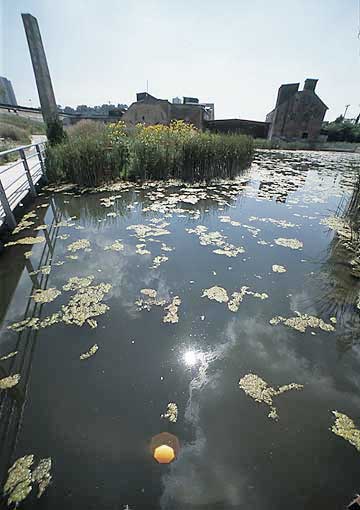
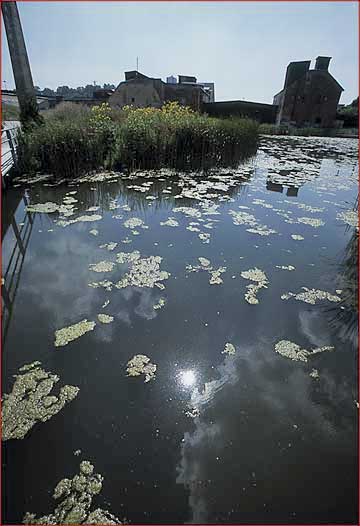
The results speak for themselves. The Sigma shows a huge flare spot while the Canon shows none. Several repetitions of this test were done, always with similar results.
Conclusion
Based on my experience using the Sigma 14mm with my D30 and D60 over a period of a couple of years, I’d say that if you’re looking for a moderately priced ultra-wide angle lens to give your DSLR wide angle capability, the Sigma 14mm f/2.8 is a decent performer for the money. Because of the 1.6X magnification factor you will be avoiding the corners of the frame where this lens does not do at all well.
If you are shooting film, or a Canon 1D, or one of the full-frame digital bodies that’s going to inevitably show up, then I’d have to say‚ avoid the Sigma. Even at its relatively moderate cost the image quality simply isn’t there.
The Canon 16-35mm f/2.8L on the other hand is a sterling performer. It is a much better lens that the previous Canon 17-35mm f/2.8 and has exceeded my expectations. If you shoot film, or there’s a full-frame digital body in your future, then I can recommend the new Canon wide zoom to you without reservation.
You May Also Enjoy...
Turning Photographs into Art Part 1: Letting Go
FacebookTweet Art is difference, innovation and aesthetics. Alain Briot 1 – Introduction This is the first essay in a new series focused on turning photographs

